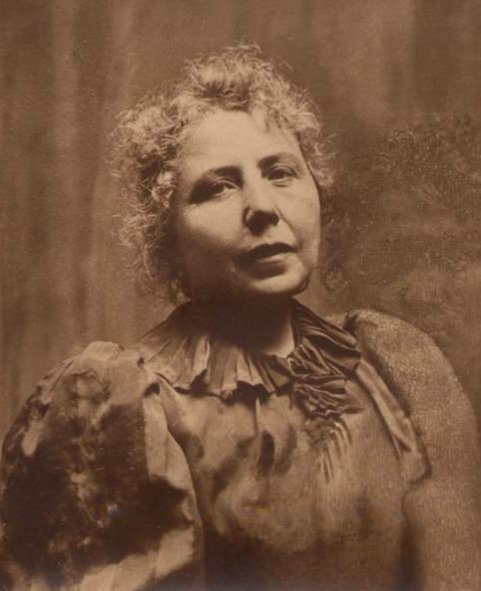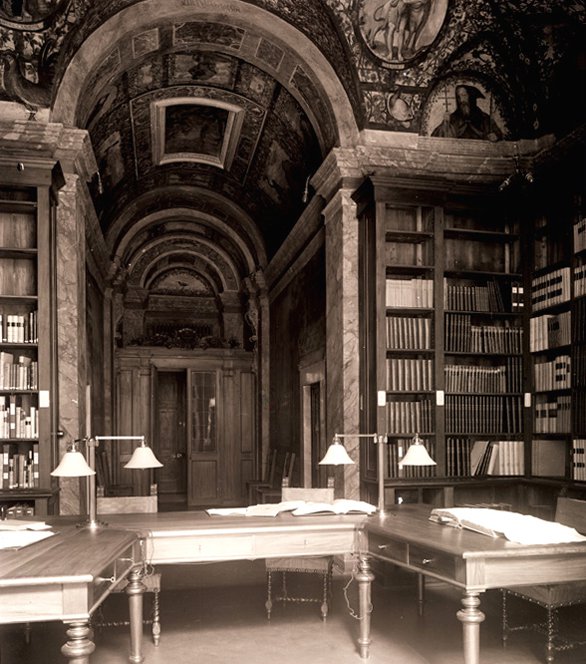Download the original British Academy Review article.
This is an extract from ‘Aspects of Art’: The lecture series, published in British Academy Review, Issue 22 (Summer 2013).

The Academy’s earliest benefactors
Henriette Hertz, who died in 1913, was one of the British Academy’s first benefactors.
Established by Royal Charter in 1902, the Academy struggled for funds in its early years – it would not be until 1924 that it would receive its first annual grant from the Treasury. However, prior to the First World War, the Academy’s indefatigable Secretary, Israel Gollancz, managed to persuade a very close circle of emigré Jewish friends to support the Academy’s activities through endowments. The primary purpose was to establish funds for the furtherance of research in particular subject areas; a spin-off benefit was the establishment of a number of series of public lectures, which served to raise the Academy’s profile.
The Academy’s first endowment came in 1907 from Constance Schweich, who established the Leopold Schweich Fund in memory of her father, to support research into ‘Ancient Civilisation with reference to Biblical Study’ – including the series of ‘Schweich Lectures’ on this theme. In 1910, Constance Schweich’s aunt, Mrs Frida Mond, gave the Academy money for research ‘in the various branches of English Literature’; this time, two lecture series were supported – the ‘Warton Lectures’ on English poetry and the ‘Shakespeare Lectures’.
In 1914, the Academy received a further endowment in the form of a bequest from Frida Mond’s close friend, Miss Henriette Hertz.
Henriette Hertz
Henriette Hertz was born in Cologne on 6 January 1846. She was good friends at school with Frida Löwenthal. When, in 1867, Frida and her husband, Ludwig Mond, moved to England, it wasn’t long before Henriette joined them to keep her friend company. And when Ludwig became a wealthy industrial chemist, Frida, Ludwig and Henriette were able to enjoy a lavish life of travelling and entertaining. In 1889, the three of them acquired space in the Palazzo Zuccari in Rome, and established an open house there which quickly became a centre of cosmopolitan intellectual life in the city.
As a young girl Henriette had developed an interest in the history of art. In Rome she decided that she wanted to improve the conditions of scholars studying Italian art history: ‘I think the time is ripe to break down those barriers constituted by nationality and gender’. She built up a collection of books on Italian art, supplemented by volumes from Frida Mond’s private library; and, together with her extensive collection of photographs, this formed the basis of a library which Henriette established at the Palazzo Zuccari – and which still exists today. The Bibliotheca Hertziana opened to scholars in 1912 on the occasion of the 10th International Congress of Art Historians which was being held that year in Rome.

The Henriette Hertz Fund
As well as being in the same close set as those who had already supported the Academy generously, by now Henriette Hertz had her own intimate connection with the Academy: in 1910, Israel Gollancz had married her niece, the painter Alide Goldschmidt.
In her will of November 1911, ‘Miss Henriette Hertz, of “The Poplars”, Regent’s Park, London, and of the Palazzo Zuccari, Rome’, bequeathed £6,000 to the British Academy. After her death on 9 April 1913, a Declaration of Trust was drawn up (November 1914) for ‘the Henriette Hertz Fund’. Following the terms of the will, the purposes of the Fund included the support of: a ‘Lecture or Investigation or Paper on a philosophical problem’ (the first ‘Philosophical Lecture’ was delivered in December 1914); a ‘Lecture or Investigation or Paper on some problem or aspect of the relation of Art in any of its manifestations to human culture’ (the first ‘Aspects of Art Lecture’ was delivered in 1916); and a ‘Public Lecture on some Master-Mind considered individually with reference to his life and work specially in order to appraise the essential elements of his Genius’ (the first ‘Master-Mind Lecture’ was delivered in 1916).
These lecture series remain to this day important elements of the Academy’s programme of events.
This page was created to mark 12 Decades of the British Academy.
